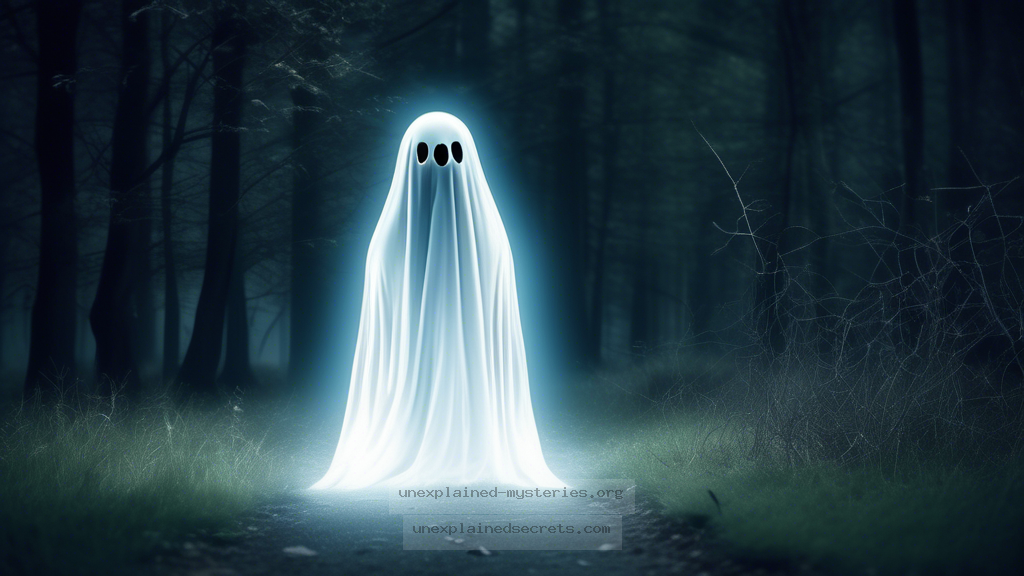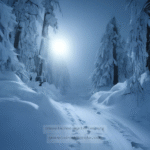What Can the Most Compelling Ghost Sightings Teach Us About the Nature of Reality?
What Can the Most Compelling Ghost Sightings Teach Us About the Nature of Reality?
The phenomena of ghost sightings have intrigued humanity for centuries, prompting questions about what lies beyond our tangible world. Ghosts, as apparitions of the deceased or manifestations of residual energy, challenge our understanding of reality and consciousness. This post delves into the intricacies of ghost sightings, exploring historical accounts, theories, and the implications they present for our understanding of life after death and the nature of existence itself. 🕵️♂️
Historical Context of Ghost Sightings
Ghost sightings are not a modern phenomenon; they have been recorded throughout history across various cultures. Ancient Egyptians believed in the concept of the ka, a spiritual double that could leave the body after death. Similarly, the Greeks spoke of phantoms and spirits that roamed the earth, often tied to unresolved issues from their lives.
In medieval Europe, ghost sightings were often linked to superstition and religious views. The
One notable historical case is that of Anne Boleyn, whose ghost has reportedly appeared at the Tower of London, where she was executed in 1536. Sightings of her apparition have been reported throughout history, suggesting a lingering presence tied to her tragic demise.
Core Concepts: Understanding Ghosts and Their Sightings
To comprehend ghost sightings, we must first explore the core concepts surrounding them. Ghosts are often categorized into three types: intelligent spirits, residual hauntings, and poltergeists. Understanding these distinctions is crucial in analyzing why and how sightings occur.
- Intelligent Spirits: These are thought to be the souls of deceased individuals who retain their consciousness and may communicate with the living.
- Residual Hauntings: These are like recordings of past events that replay without any conscious interaction. They often occur in specific locations where significant emotional events took place.
- Poltergeists: Known for their physical manifestations, poltergeist activity is often attributed to the energy of a living person, particularly adolescents, rather than a spirit.
Each type of ghost sighting presents unique implications and leads to diverse interpretations of what we perceive as reality. Understanding these categories can aid both researchers and enthusiasts in their investigations. 🔍
Documented Case Studies of Ghost Sightings
Several documented case studies highlight the compelling nature of ghost sightings. One prominent example is the “Brown Lady of Raynham Hall,” a ghost known for her distinctive appearance in a photograph taken in 1936. The image captures what appears to be a figure dressed in brown, floating down the staircase. This photograph has been extensively analyzed, and while skeptics argue it could be a product of double exposure, many enthusiasts believe it remains one of the most convincing pieces of evidence for ghostly existence.
Another notable case is the “Enfield Poltergeist” of 1977, where a family in London reported a series of violent disturbances, including furniture moving and mysterious knocking. Investigators from the Society for Psychical Research documented the events extensively. This case raises questions about the line between the living and the dead, suggesting that energy from the living can manifest in ghostly forms.
Theories Behind Ghost Sightings
Various theories attempt to explain the phenomenon of ghost sightings, ranging from psychological to paranormal. Some of the prominent theories include:
- Psychological Theories: These suggest that ghost sightings could be a manifestation of grief, trauma, or the subconscious mind. The power of suggestion and the influence of cultural beliefs can lead individuals to perceive ghostly encounters.
- Quantum Physics: Some researchers propose that ghosts could be interdimensional beings or energy forms that exist parallel to our reality. This theory aligns with the idea that consciousness may extend beyond physical existence.
- Electromagnetic Fields (EMF): Certain theories suggest that high levels of EMF can affect human perception, leading to feelings of unease or hallucinations that could be interpreted as ghostly encounters.
Practical Implications of Ghost Sightings
The implications of ghost sightings extend beyond mere fascination; they challenge our understanding of life, death, and consciousness. If ghosts are indeed manifestations of the deceased, what does that suggest about the afterlife? The possibility of continued existence after death raises significant questions about how we live our lives and how we confront mortality.
Furthermore, ghost sightings can have practical implications for mental health. Individuals dealing with grief may find comfort in the belief that their loved ones are still present in some form. On a societal level, ghost sightings have led to the emergence of ghost tours and paranormal investigations, contributing to local economies while fostering community engagement with history and folklore. 💰
Alternative Perspectives on Ghost Sightings
While many enthusiasts embrace the idea of ghosts, skeptics present alternative perspectives that challenge the existence of supernatural phenomena. Skepticism often focuses on the lack of empirical evidence and the influence of cognitive biases. For instance, pareidolia—the tendency to perceive familiar patterns, like faces, in random stimuli—can lead individuals to interpret ambiguous visual cues as ghostly figures.
Furthermore, the role of technology in ghost hunting has been a topic of debate. Tools like EVP (Electronic Voice Phenomena) recorders and infrared cameras have provided compelling evidence for some, but critics argue that technological flaws and misinterpretation often lead to false conclusions. Thus, understanding the limitations of our tools and perceptions is crucial in exploring these mysteries.
Common Misconceptions and Clarifications
Numerous misconceptions surround ghost sightings that can cloud judgment and understanding. One common belief is that all ghosts are malevolent or vengeful spirits. In reality, many reported encounters involve benign or even protective apparitions. Another misconception is that ghost sightings can only occur in haunted locations. However, many people report experiences in seemingly ordinary places, indicating that the phenomenon isn’t restricted to specific sites.
Furthermore, the idea that ghost sightings are purely a product of mental illness or hallucinations undermines the experiences of those who have encountered unexplained phenomena. While psychological factors may play a role, they do not fully account for the sheer volume of reports and experiences shared globally. 🔄
Best Practices for Investigating Ghost Sightings
For individuals interested in investigating ghost sightings, following best practices can enhance the credibility and integrity of their explorations:
- Document Everything: Maintain thorough records of sightings, including dates, locations, and any environmental factors present at the time.
- Engage with Skepticism: Approach investigations with an open mind while remaining critical and questioning the validity of experiences.
- Utilize Technology Wisely: Employ tools like EMF meters and recording devices, but be aware of their limitations and potential for error.
- Respect Historical Context: Understand the history and significance of the locations being investigated, as they can provide insight into potential hauntings.
Future Developments and Ongoing Research
The study of ghost sightings remains a dynamic field with ongoing research and development. Advances in technology, such as improved imaging techniques and cognitive science, may provide new insights into the nature of these phenomena. Additionally, interdisciplinary approaches that integrate psychology, sociology, and physics could yield a more comprehensive understanding of ghostly encounters.
As societal attitudes towards the paranormal evolve, increased openness to exploring these experiences may lead to more rigorous and nuanced investigations. Collaborative efforts between researchers, amateur ghost hunters, and skeptics can foster a culture of inquiry that respects diverse perspectives while striving for clarity in understanding the unknown. 🔬
Conclusion: Reflecting on the Nature of Reality
Ghost sightings present a compelling intersection of history, psychology, and metaphysics. As we explore the various dimensions of these phenomena, we are challenged to confront our beliefs about life, death, and the very fabric of reality. While the existence of ghosts remains a contentious topic, the insights gained from studying sightings can enrich our understanding of the human experience and the mysteries that lie beyond our comprehension.
Ultimately, whether one views ghost sightings as manifestations of the paranormal or as products of psychological phenomena, they serve as a reminder of the complexities of existence and the enduring questions that continue to inspire curiosity and exploration. 🕊️
Other Articles
Recent Posts
- What Happened to Flight MH370? The Conspiracy Theories That Still Haunt Us
- What Secrets Lurk Within the Walls of the Infamous Trans-Allegheny Lunatic Asylum?
- What Evidence Supports the Existence of Bigfoot in the Pacific Northwest?
- What Happened to the Indus Valley Civilization? Unraveling the Mysteries of Ancient Urban Life
- Can Telepathy Be Scientifically Proven Through Laboratory Evidence?







